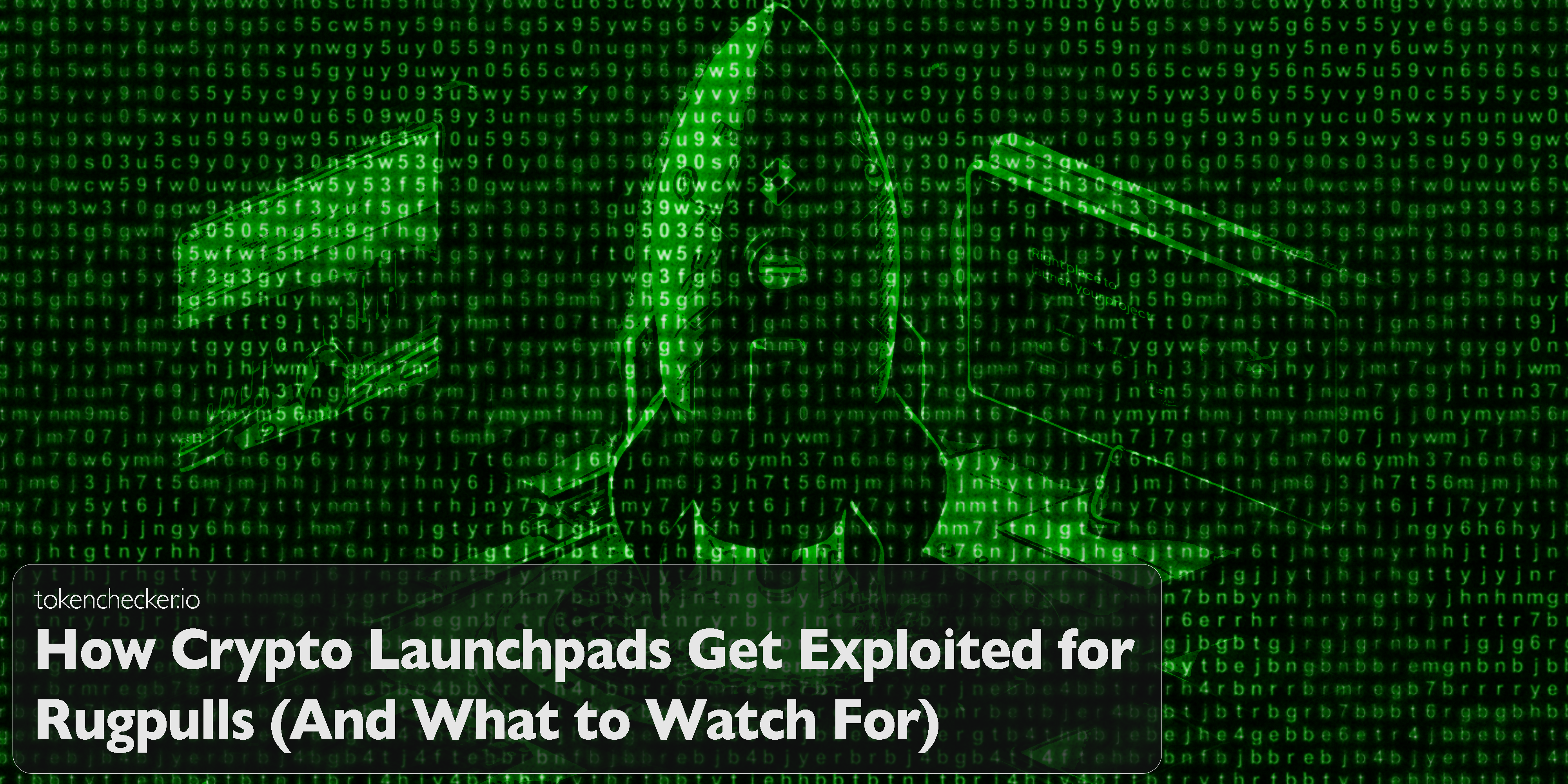
How Crypto Launchpads Get Exploited for Rugpulls (And What to Watch For)
Introduction
Crypto launchpads were built to help great projects raise money and grow fast. But while they make fundraising easy, they also make it easy for scammers to pull off rugpulls.
This article breaks down exactly how rugpull scams get past even the most trusted launchpads, and why just being on a platform doesn’t mean a token is safe. We'll also show how tokenchecker.io can help you spot the red flags before you ever click buy.
Why Launchpads Are a Double-Edged Sword
On paper, launchpads are perfect: they let early-stage crypto projects raise capital, build community, and distribute tokens all in one place. Some even offer marketing and listing support.
But this speed and openness come at a cost.
On decentralized launchpads, anyone can launch a token with little to no background check. That means scammers can deploy a smart contract, inject hype, and walk away with the funds all in under an hour.
Even centralized platforms, which are stricter, have failed to catch rugpulls. Their vetting isn’t foolproof, and the perception of safety can create a false sense of trust.
5 Rugpull Methods That Exploit Launchpad Features
1. Malicious Smart Contracts
Scammers hide functions like mint(), withdrawAll(), or even selfdestruct() inside their contract code. These let them create unlimited tokens, drain the funds, or kill the contract after launch.
They may split these functions across proxy contracts or obfuscate the names like calling a rug function safeWithdraw() to make it look innocent.
tokenchecker.io flags:- Backdoors
- Delegatecall/proxy upgrades
- Suspicious admin functions
2. No or Weak Liquidity Locks
A real project locks most of its liquidity for years. A scam? They skip the lock or use a short timer. Once enough money is pooled, they yank the LP tokens and exit.
Real example: AnubisDAO raised $60M and vanished 20 hours later.
tokenchecker.io flags:- Lock status and duration
- LP token ownership
3. Token Allocation Abuse
Scammers pre-mine tons of tokens into their own wallets. Then they hype the token, wait for price to spike, and dump it all at once.
You’ll see a handful of wallets holding nearly the entire supply instant red flag.
tokenchecker.io flags:- Holder distribution
- Insider dumping
- Mint activity post-launch
4. Sell Order Restrictions (Honeypots)
Some projects let you buy tokens but silently block you from selling. They use blacklist functions, dynamic taxes, or permissions that only allow the dev to sell.
Real example: SQUID Token no one could sell but the dev team.
tokenchecker.io flags:- Sell simulation failures
- Tax logic
- Honeypot detection
5. Fake Audits and Anonymous Teams
Scams love to slap on a badge that says “audited.” But often there’s no real audit or it’s from an unknown firm.
Combined with anonymous devs and no social footprint, it becomes nearly impossible to hold anyone accountable when things go wrong.
What to watch for:- No GitHub or LinkedIn presence
- No audit URL or source
- All marketing, no code
Why Launchpad Vetting Isn’t Enough
Even launchpads that claim “rigorous reviews” often get fooled. Some just do surface checks. Others rely on auto-scans. And in many decentralized launchpads, there’s no vetting at all.
The result? Investors assume a project is legit just because it’s listed.
That assumption can be costly.
How to Stay Safe on Launchpads
Whether you’re buying from a CEX or a DEX launchpad, here’s how to stay ahead:
- Use tokenchecker.io: Scan for backdoors, liquidity traps, honeypots, and suspicious contract logic.
- Check Liquidity Locks: If it’s not locked or it’s only locked for a few days, stay away.
- Look at Wallet Distribution: Are 2 wallets holding 90% of the supply? Bad sign.
- Avoid Anonymous Teams: If you can’t verify who they are, assume the worst.
- Test Small Buys and Sells: If you can't sell a tiny amount, something’s wrong.
Final Thoughts
Crypto launchpads are amazing tools but they’re not foolproof. They give honest projects a fast track to funding, but also give scammers a fast track to rugpulls.
That means you can’t rely on a platform’s reputation. You have to check the token itself.
tokenchecker.io gives you the tools to see beyond the hype. Whether it’s a fake audit, a minting backdoor, or a silent honeypot, you’ll know before you risk a dollar.
Because in crypto, speed without security is just a shortcut to loss.